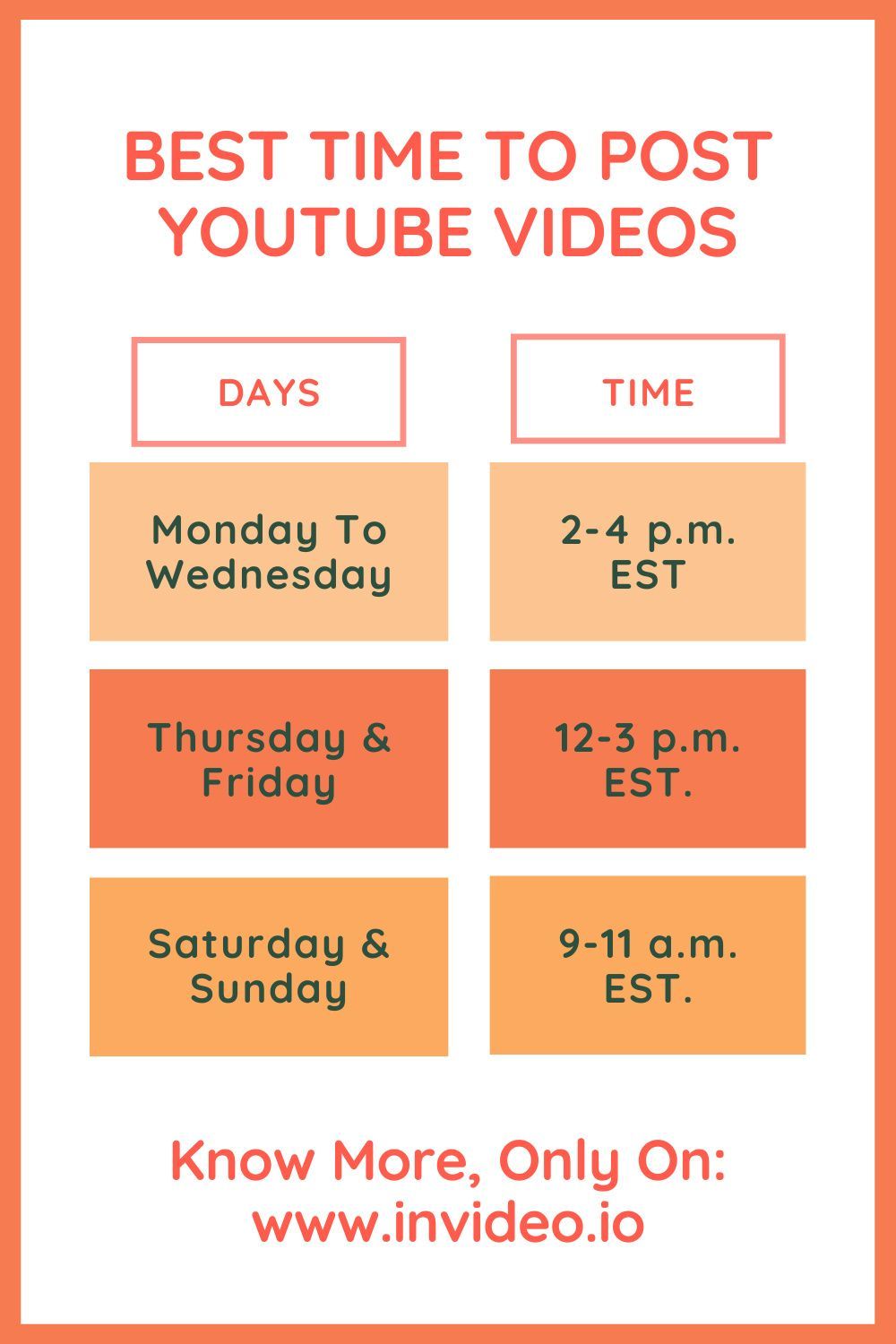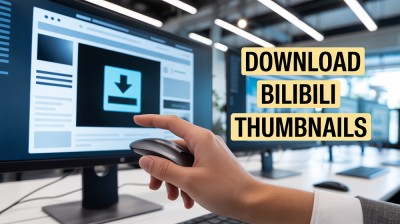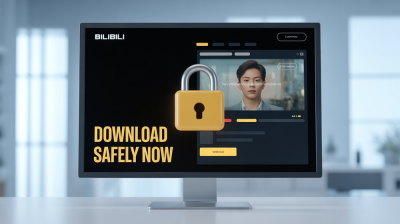Choosing the best time to post videos on YouTube can feel like a guessing game. But it doesn't have to be! With a bit of strategy and understanding of your audience, you can significantly enhance your video's reach and engagement. In this post, we'll explore how to find that sweet spot for posting your videos and delve into the intricacies of YouTube's algorithms to make sure your content gets the attention it deserves!
Understanding YouTube Algorithms

YouTube's algorithm is like a complex puzzle that determines what content gets seen by whom and when. It's essential to grasp how this system works to optimize your posting schedule effectively. Here are some key factors that influence the algorithm:
- Engagement Metrics: The algorithm favors videos that garner higher engagement rates. This includes likes, comments, shares, and watch time. The more interactive your content, the more likely it is to be promoted by YouTube.
- Viewer Retention: How long viewers stick around to watch your video matters a lot. High retention rates signal to the algorithm that your content is worth watching, leading to higher rankings in search results and recommendations.
- Post Frequency: Regular uploads can help maintain audience interest and signal to the algorithm that you're an active creator. However, quality should never be sacrificed for quantity!
- Time of Day: Posting when your target audience is most active can lead to immediate engagement, which the algorithm notices and boosts further. This means understanding the time zones and habits of your audience is crucial.
So, how do you leverage this information to choose the best time to post? Start by analyzing your YouTube Analytics. Look for:
| Metric | What to Look For |
|---|---|
| Audience Insights | Identify when your subscribers are online. This report gives you a breakdown by day and time. |
| Watch Time | Monitor when your videos receive the most views. It can guide you to optimal posting times. |
| Engagement Trends | Look for patterns in engagement. If certain days yield higher interactions, consider that for future uploads. |
In addition to analytics, consider experimenting with different posting times. Try posting during weekdays versus weekends or in the morning versus evening. This trial-and-error approach can reveal surprising insights that might not be immediately obvious.
Remember, while understanding algorithms is crucial, the ultimate goal is to create content that resonates with your audience. So, combine data-driven insights with your creative flair, and you'll be well on your way to mastering the YouTube landscape!
Also Read This: How to Block YouTube Ads on Xbox: A Step-by-Step Guide
3. Analyzing Audience Behavior
Understanding your audience is key to successfully posting videos on YouTube. But how do you analyze their behavior? Start by diving into YouTube Analytics. This tool offers valuable insights into when your viewers are most active and engaged. Look for patterns in their viewing habits—are there specific days or times they prefer? You might be surprised at what you find!
Here are some crucial metrics to focus on:
- Watch Time: This shows how long viewers are staying engaged with your videos. Higher watch times during certain periods suggest those times are prime for posting.
- Traffic Sources: Knowing where your views are coming from can help you understand when your audience is online. Are they finding you through search, recommendations, or social media?
- Demographics: Knowing your audience’s age, gender, and location can influence your posting strategy. For instance, if your audience is primarily teenagers, consider posting in the late afternoon or early evening when they're out of school.
Another technique is to engage directly with your audience. Polls and community posts can be excellent ways to ask your viewers when they prefer to see new content. You might discover that they have specific times they look forward to your uploads. This not only helps with scheduling but also fosters a deeper connection with your viewers.
Lastly, keep an eye on trends. If a holiday or major event is coming up, consider how that might affect your audience's viewing habits. For example, if your content is related to gaming, posting around major gaming conventions or game release dates could yield better engagement.
Also Read This: How to Add Music from YouTube to iMovie Projects: Step-by-Step Instructions
4. Optimal Posting Times Based on Data
Once you've gathered insights from your audience's behavior, it's time to put that data to work! Various studies and reports suggest general posting times that can maximize your video views. While these times might not fit everyone, they provide a solid starting point.
Here are some recommended posting times based on data:
| Day | Best Time to Post (UTC) |
|---|---|
| Monday | 2 PM - 4 PM |
| Tuesday | 2 PM - 4 PM |
| Wednesday | 2 PM - 4 PM |
| Thursday | 12 PM - 3 PM |
| Friday | 12 PM - 3 PM |
| Saturday | 9 AM - 11 AM |
| Sunday | 9 AM - 11 AM |
These times are based on when viewers are most active on the platform. Posting during these windows can help your videos gain traction quickly. Keep in mind that the times listed above are in UTC, so you'll want to convert them to your local time zone.
Additionally, don't forget that YouTube's algorithm favors videos that receive quick engagement after posting. This means that if you can align your posting times with when your audience is online, your videos are more likely to be promoted in their feeds and recommended to others.
Finally, be sure to experiment! Use A/B testing by posting at different times over a few weeks, and compare the performance of each video. This is a fantastic way to refine your posting strategy and uncover the best times unique to your audience.
Also Read This: How Much Does 30 Million Views on YouTube Pay? Breaking Down Earnings
5. Tools to Help Determine Best Posting Times
Choosing the best time to post your videos on YouTube can feel like navigating a maze, but thankfully, there are several tools designed to guide you through this process. Here’s a rundown of some of the most effective ones:
- YouTube Analytics: This is your first stop! In the YouTube Studio, go to the Analytics section and find the “Audience” tab. Here, you’ll see a graph showing when your subscribers are most active. This data is golden because it’s tailored specifically to your audience.
- TubeBuddy: This handy browser extension not only helps with video optimization but also provides insights into the best times to publish based on your channel's performance. You can view trends and adjust your posting times accordingly.
- VidIQ: Similar to TubeBuddy, VidIQ offers a suite of tools that track engagement metrics. Its "Best Time to Post" feature analyzes when your viewers are online, helping you catch that wave of viewer interest.
- Social Blade: While more known for tracking channel stats, Social Blade can give you a broader picture of similar channels. By analyzing when they post and their engagement rates, you can glean insights that might help refine your own schedule.
- Hootsuite and Buffer: Although primarily social media management tools, both platforms allow you to track engagement patterns and schedule your YouTube posts, giving you a comprehensive view of optimal timings.
Using a combination of these tools can help you pinpoint the ideal posting times that align with your audience's habits and preferences. Remember, every channel is unique, so what works for one may not work for another. It’s all about finding your sweet spot!
6. Testing and Adjusting Your Posting Schedule
Once you’ve gathered data on when to post, the real fun begins: testing! Don’t just set your posting schedule in stone after the first analysis; instead, be ready to experiment. Here’s how you can effectively test and adjust your posting schedule:
- Start with a Baseline: Choose a consistent time frame—say, two weeks of posting at the same time—and track the performance of each video. Note views, likes, comments, and watch time. This will give you a baseline to compare against.
- Change One Factor at a Time: If you decide to adjust your posting time, do it gradually. For example, move your posting time by an hour or two and maintain that schedule for another couple of weeks. This way, you can isolate the impact of the new timing.
- Look for Patterns: At the end of each testing phase, dive into the analytics to see if your adjustments had a positive impact. Are viewers engaging more? Are your videos getting more shares? These metrics will give you a clearer picture.
- Solicit Feedback: Don’t hesitate to ask your audience! Create a poll on your community tab asking when they prefer to see new content. Engaging with your audience can provide invaluable insights.
- Stay Flexible: Audience behavior can change, so be prepared to adapt your schedule as needed. Seasonal trends, holidays, or even shifts in your content type can all influence when to post.
In the world of YouTube, testing and adjusting your posting schedule isn’t just a one-time task; it’s an ongoing process. Stay curious, keep experimenting, and you’ll find that perfect timing to maximize your video’s reach!
 admin
admin








